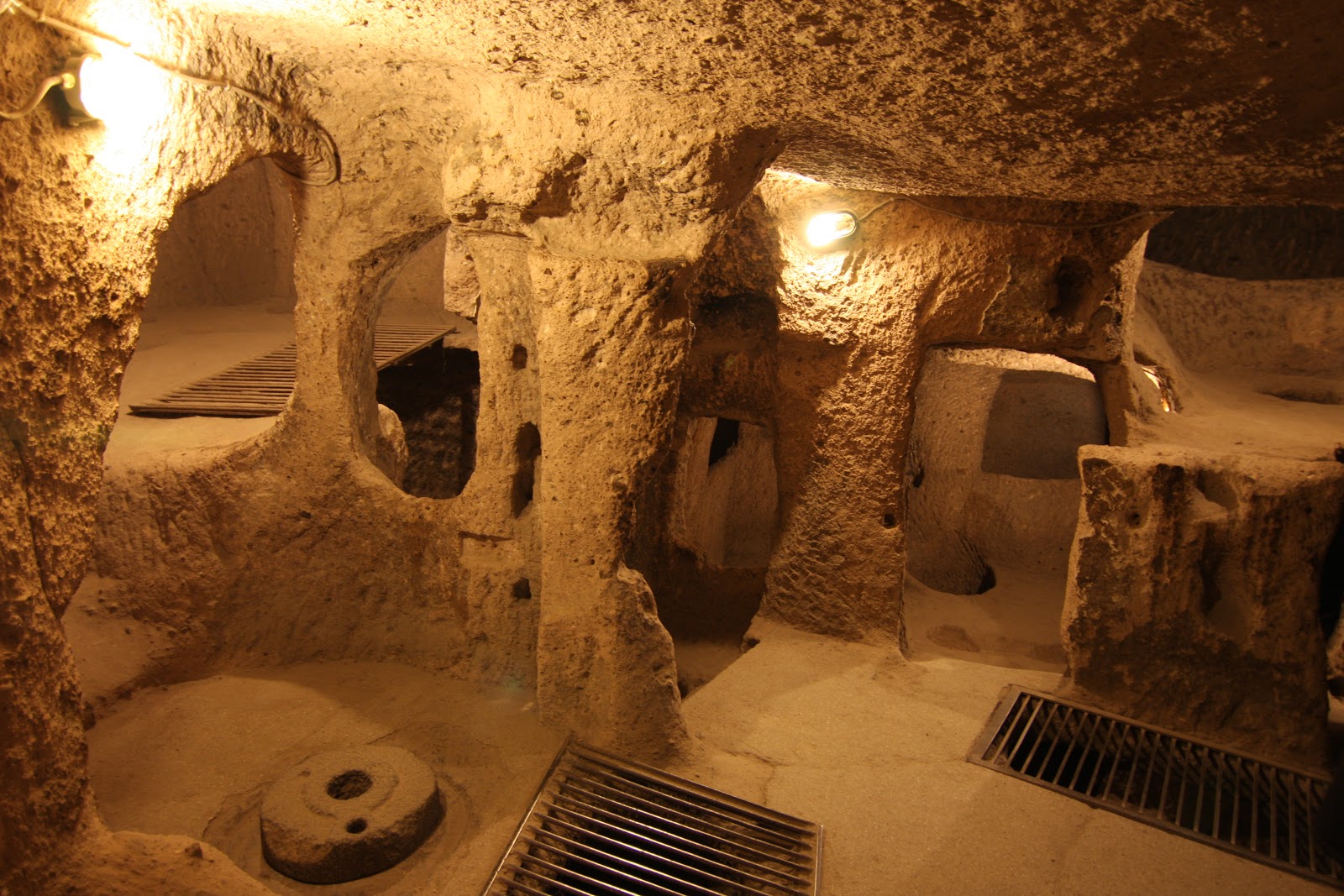Beneath the plains of Cappadocia in central Turkey lies one of the most fascinating archaeological discoveries in history—the underground city of Derinkuyu. This ancient subterranean city, carved out of soft volcanic rock, could house up to 20,000 people along with their livestock, food, and supplies. It’s a marvel of engineering and a testament to the ingenuity of its builders.
Derinkuyu descends 18 stories deep into the earth, with a complex network of tunnels, rooms, and passageways that were used for living, storage, worship, and defense. The city features everything from ventilation shafts and wells to stables, kitchens, and even a school. Massive stone doors were designed to seal off sections of the city, protecting its inhabitants from invaders.
The origins of Derinkuyu are still debated, but it is believed to have been constructed around the 8th century BCE by the Phrygians or the early Christians seeking refuge from persecution. Over centuries, it served as a sanctuary during various conflicts, including Roman, Byzantine, and later Ottoman periods.
What makes Derinkuyu truly intriguing is the mystery that still surrounds it. Despite being extensively explored, many parts of the city remain unexcavated, leaving archaeologists to wonder what other secrets it holds. The discovery of this hidden world beneath our feet continues to captivate the imagination of historians, archaeologists, and travelers alike.
Derinkuyu is a remarkable reminder of humanity’s resilience and resourcefulness, a place where history and mystery intertwine in the depths of the earth.

